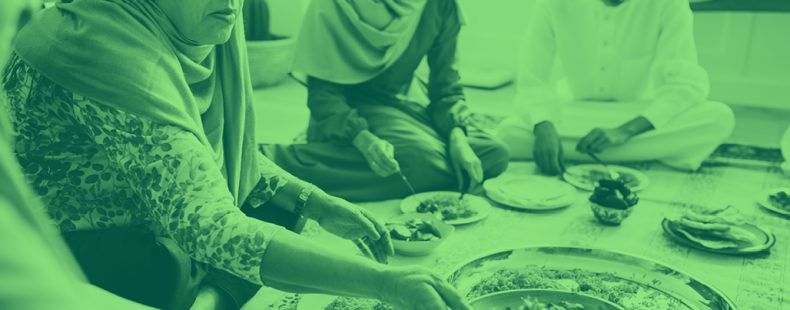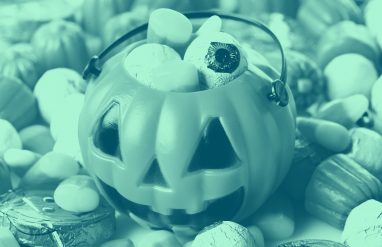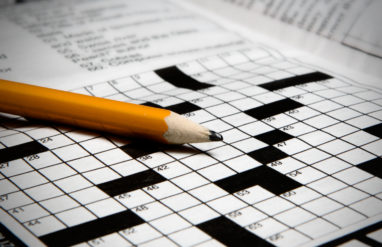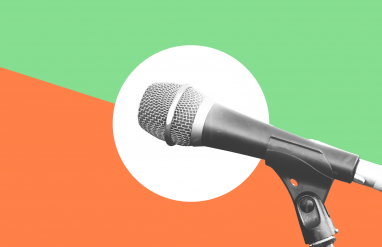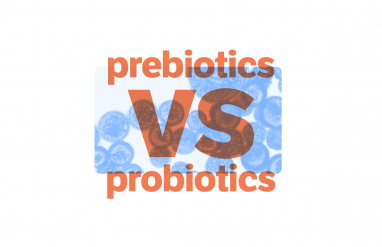Two important Muslim holidays stand out as some of the most important dates on the Islamic calendar: Eid al-Fitr in the spring and Eid al-Adha in the summer. They are separate festivals, and each commemorates a different pillar in the Five Pillars of Islam. However, both are commonly shortened to simply Eid, and the greeting Eid Mubarak (roughly meaning “Happy Eid” or “Blessed Eid”) can be used for both.
There’s a lot to know about each Eid, from specific dietary customs to traditional prayers. Here’s what you need to know about the two, as well as why Eid is used to describe both.
What is Eid?
Pronounced [ eed ], Eid comes from the Arabic īd, which means “festival” or “feast.” When people talk about Eid, they are using the short name for one of two different Islamic festivals: Eid al-Fitr or Eid al-Adha.
Though both celebrations can go by the shorter Eid, the two are not the same. Eid al-Fitr, sometimes spelled Eid ul-Fitr, is at the end of Ramadan and marks the first day religious followers can eat between dawn and dusk after a month of daytime fasting.
Eid al-Adha is sometimes spelled Id al-Adha or Eid-ul-Adha. Unlike Eid al-Fitr, Eid al-Adha is a four-day festival. The latter is also sometimes called the Festival of Sacrifice or the Great Festival since it is considered the holier of the two holidays.
Eid al-Fitr vs. Eid al-Adha
Eid al-Fitr officially starts the day after Ramadan ends. Pronounced [ eeduhl-fee-truh ], the name of the holiday literally translates to “festival of the breaking of the fast.” The main point of Eid al-Fitr is right there in the name.
During the month of Ramadan on the Islamic calendar, many Muslims eat a pre-dawn meal called a suhoor, fast during the daylight hours, and then eat a meal called iftar after sunset. This period of fasting, or sawm, is the fourth pillar in the Five Pillars of Islam. Eid al-Fitr is when those who’ve been observing the fast can once again eat when the sun is out.
Ruminate over the words you should learn so you can talk about Ramadan with aplomb.
Eid al-Adha (pronounced [ eeduhl-ahd-hah ]) is linked to the story of Prophet Ibrahim in the Qur’an. In the story, Allah commands Ibrahim to sacrifice his son Ismael. Ibrahim showed that he intended to obey the commandment, and just before following through with the sacrifice, Allah gave Ibrahim a ram to sacrifice instead. Eid al-Adha commemorates this story with a four day celebration—hence the reasoning for Eid al-Adha’s other name, the Festival of Sacrifice.
Like Eid al-Fitr, Eid al-Adha has a connection to the Five Pillars of Islam. It’s held on the last day of the Hajj, which is the pilgrimage to Mecca that Muslims are required to take once in a lifetime as dictated in the Five Pillars of Islam. Eid al-Adha is one of the most important religious periods for Muslims that’s celebrated by followers around the world, not just people who take their pilgrimage to Mecca that year.
When is Eid?
On the Islamic calendar, both Eid al-Fitr and Eid al-Adha are celebrated on the same days every year. However, the Islamic calendar is a lunar calendar that’s based on the cycle of the moon, so when each celebration is held on the Gregorian calendar varies.
Eid al-Fitr is held on the first day of Shawwal, which is the tenth month in the Islamic calendar and comes after Ramadan. In 2023 on the Gregorian calendar, Eid al-Fitr starts at dusk on April 20 and ends at dusk on April 21. It’s on April 10 through April 11 in 2024.
Eid al-Adha starts on the tenth day of the 12th and last month of the Islamic calendar, which is called Dhul Hijjah. It starts on the evening of June 28 and ends on the evening of June 29 in 2023, and runs from June 16 through June 17 in 2024.
How do people celebrate Eid-al-Fitr?
Celebrating the end of Ramadan with a feast is central to Eid al-Fitr. Observant Muslims may dress up for the meal and holiday, as well as decorate their homes and congregate with friends and family. But first, it is integral to start the day with a religious service at a mosque or in congregation, as well as to make charitable donations, which many people do. One such donation is called the Zakat al-Fitr, made before the end of the Ramadan fast.
When it comes to food, sheer khurma—a warm and sweet vermicelli pudding that has dates, cardamom, and saffron in it—is a standard dish on Eid al-Fitr. Dates, the oblong fruit of the date palm, make frequent appearances throughout the holiday’s traditional dishes. This desert fruit is what the Prophet Muhammad ate to break his fast in the Qur’an.
Why do we call the abstaining from food and drink “fasting”? Read our article to find out.
The rest of what makes up the menu for the feast largely depends on where people are located. A sweet cheese dumpling in spiced milk called ras malai is common in India and Pakistan, while a date- and rosewater-flavored pastry called klaichi is often eaten in Iraq. Cookies called maamoul that are stuffed with nuts and dates and covered with powdered sugar are frequently eaten in Lebanon, Egypt, Syria, and Palestine. In Somalia, a breakfast bread called cambaabur is eaten with sugar and yogurt.
Sweets aren’t the only traditional foods, of course. A slow cooked stew of meat, vegetables, and dried fruits called tajine (which gets its name from the clay vessel it’s cooked in) is served in Algeria, while a chicken, rice, and nuts dish called rezz aa djej (literally, rice with chicken) is often served in Lebanon.
How do people celebrate Eid-al-Adha?
In the story of Prophet Ibrahim in the Qur’an, the devil tries to convince Ibrahim to refuse to sacrifice his son, thereby disobeying Allah. Instead, Ibrahim throws rocks at the devil to make him go away. This is symbolically repeated today by Muslims on their Hajj pilgrimage. Those in Mecca start Eid al-Adha by throwing pebbles at three pillars (now replaced with oblong walls) in Mina which represent the devil and where it’s believed Ibrahim’s face-off with the devil took place.
Eid al-Adha isn’t just for people taking their pilgrimage, however. Around the world, Eid al-Adha starts with the Salat al-Eid (the Eid prayer) that’s given right after sunrise. A sermon comes next, and then, for many Muslims around the world, there’s an animal sacrifice (typically a goat, sheep, cow, or camel) called qurbani that’s done in reference to the ram that Allah provided for Ibrahim to sacrifice in place of Ismael.
The meat from the animal is cooked and then split into three parts: one for family, one for friends and neighbors, and one for people who are poor. Those who don’t sacrifice an animal may purchase and donate meat from a halal butcher.
As with Eid al-Fitr, nice clothes, religious services at the mosque, time with family and friends, and charitable donations are all a big part of Eid al-Adha. It’s also a time to exchange gifts, because there’s a lot to celebrate.
